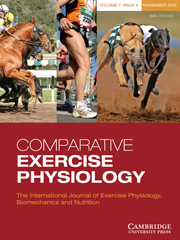Article contents
The limitations of the constant load and self-paced exercise models of exercise physiology
Published online by Cambridge University Press: 03 February 2012
Abstract
The fundamental tenets of exercise physiology are to describe energy transformations during physical work and make predictions about physical performance under different conditions. Historically, the most popular method to observe such responses during exercise has been the constant load or fixed-intensity protocol, based largely on the assumption that there is a certain threshold response of the organism under a given condition. However, constant load exercise does not fully allow for randomness or variability, as the biological system is overridden by a predetermined externally imposed load that cannot be altered. Conversely, in self-regulated (paced) exercise, there is almost an immediate reduction in power output and muscle recruitment upon commencing exercise. This observation suggests the existence of neural inhibitory command processes. This difference in regulation demonstrates the inherent importance of variability in the biological system; for in tightly controlled energy expenditure, as is the case during constant load exercise, sensory cues cannot be fully integrated to provide a more appropriate response to the given task. The collective evidence from conventional constant load versus self-regulated exercise studies suggests that energy transformations are indeed different, so that the inherent biological variability accounts for the different results achieved by the two experimental paradigms.
- Type
- Review Article
- Information
- Copyright
- Copyright © Cambridge University Press 2012
References
- 11
- Cited by


